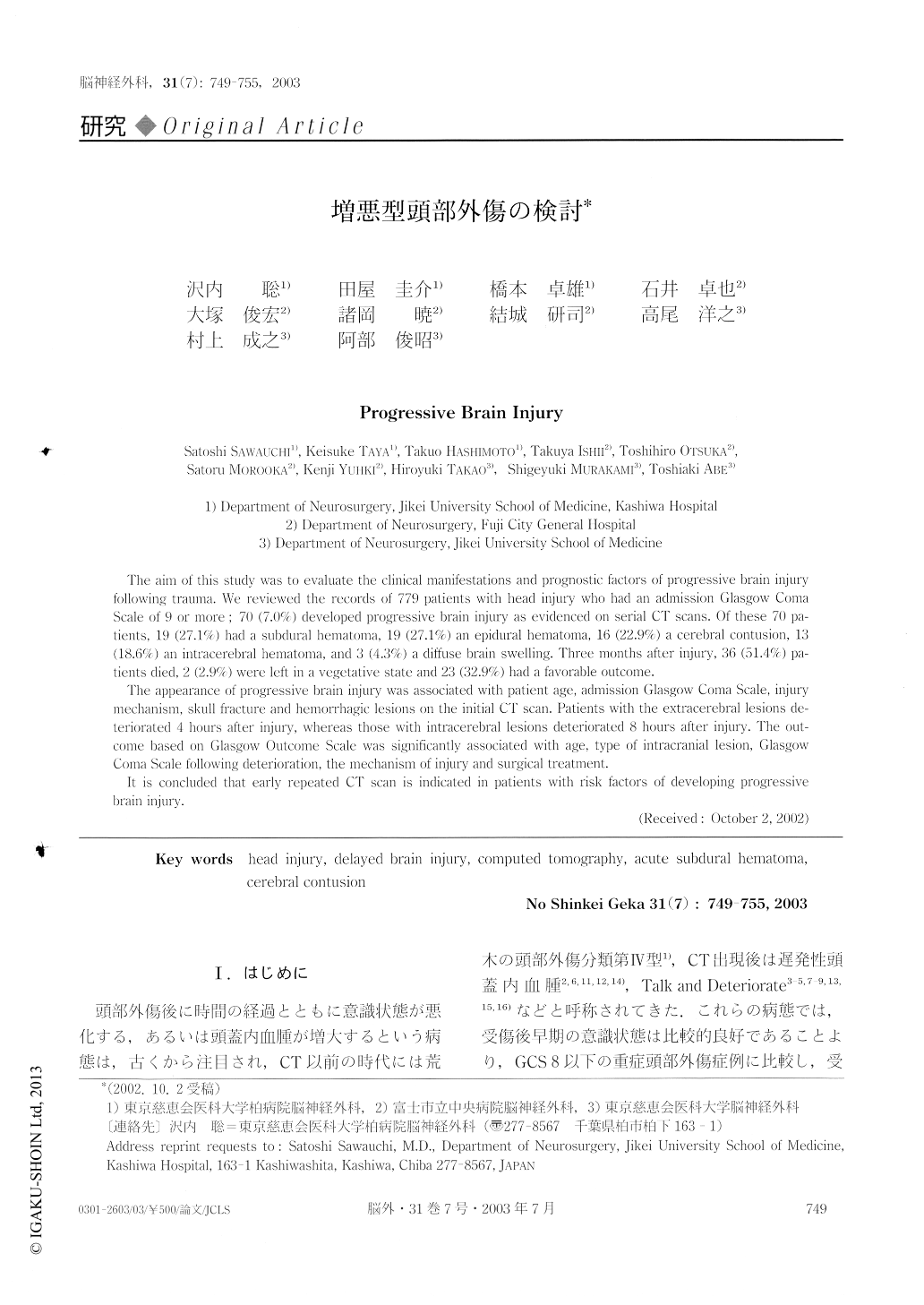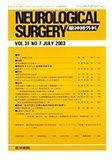Japanese
English
- 有料閲覧
- Abstract 文献概要
- 1ページ目 Look Inside
Ⅰ.はじめに
頭部外傷後に時間の経過とともに意識状態が悪化する,あるいは頭蓋内血腫が増大するという病態は,古くから注目され,CT以前の時代には荒木の頭部外傷分類第IV型1),CT出現後は遅発性頭蓋内血腫2,6,11,12,14),Talk and Deteriorate3-5,7-9,13,15,16)などと呼称されてきた.これらの病態では,受傷後早期の意識状態は比較的良好であることより,GCS8以下の重症頭部外傷症例に比較し,受傷時の外力による一次性脳損傷は軽微であると推測される.それにもかかわらず,その死亡率は高率であり,発生を予測あるいは回避できる要因があるのか否か興味深い.
われわれは,頭部外傷後,来院時GlasgowComa Scale(GCS)9以上であったにもかかわらず,その後に頭蓋内病変に起因して意識障害が進行した症例を増悪型頭部外傷とし,その病態の解析を行った.
The aim of this study was to evaluate the clinical manifestations and prognostic factors of progressive brain injury following trauma. We reviewed the records of 779 patients with head injury who had an admission Glasgow Coma Scale of 9 or more ; 70 (7.0%) developed progressive brain injury as evidenced on serial CT scans. Of these 70 pa-tients, 19 (27.1%) had a subdural hematoma, 19 (27.1%) an epidural hematoma, 16 (22.9%) a cerebral contusion, 13 (18.67) an intracerebral hematoma, and 3 (4.3%) a diffuse brain swelling.

Copyright © 2003, Igaku-Shoin Ltd. All rights reserved.


